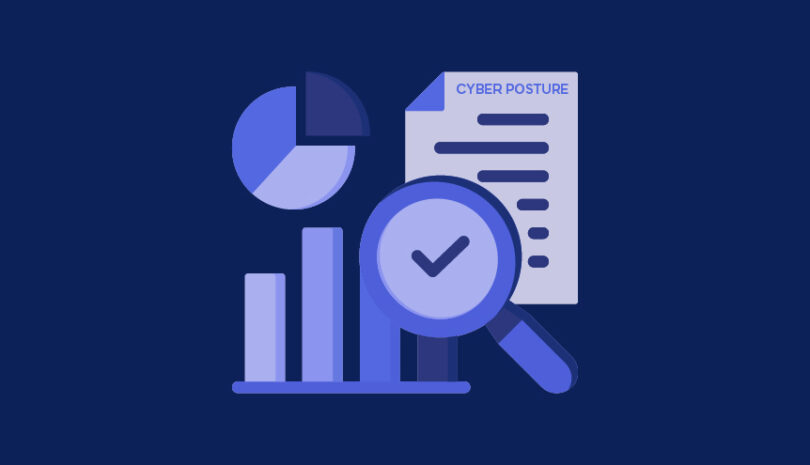Your extended supply chain is a source of strength for your business, allowing you to tap into the specialized capabilities of the best service providers, vendors, and contractors anywhere in the world. But it’s also one of your biggest weaknesses. Each third party introduces potential backdoors to your critical systems or sensitive data, making third-party cyber risk a serious concern.
Third-party cyber risk refers to the security threats and vulnerabilities that arise from the external vendors and service providers you work with, especially those with access to your networks, applications, or sensitive information. These risks can result in data breaches, operational disruptions, reputational damage, and regulatory penalties.
Supply chain attacks are becoming more frequent and costly. In fact, according to the Ponemon Institute, more than half of data breaches now originate from third parties. Just one vendor with weak security practices can open the door to a major incident.
Neglecting third-party cyber risk can have significant consequences. If a vendor is compromised and has access to your databases, the fallout could include stolen data, customer mistrust, financial losses, and legal exposure.
With this kind of threat hanging over your organization, managing third-party cyber risk should be a top priority. It may seem like a daunting task, but we’re here to help. In this article, we’ll define what third-party cyber risk is, explain why it matters, and walk you through best practices and essential KPIs to track so you can evaluate, monitor, and reduce third-party risk with confidence.
Understanding Third-Party Cyber Risk
Let’s begin by defining our terms. Third-party cyber risk refers to the potential threats and vulnerabilities that arise because of the external vendors, contractors, or service providers that you work with, and their access to your data, systems, or networks.
Any security breach or failure from a third party can have severe repercussions, including data breaches, financial loss, operational disruption, regulatory penalties, and reputational damage. This makes it critical to evaluate and proactively manage third-party cyber risk, especially since increasing reliance on outsourcing and cloud services extends your attack surface.
However, third-party cyber risks are much harder to manage than internal risks. You have less control over and visibility into your third parties’ cybersecurity posture. Their security measures, compliance requirements, auditing schedules, and more might differ from yours.
That’s why evaluating risk is the vital first step in managing that risk. With a structured process for third-party cyber risk evaluation, you gain a clear understanding of each vendor’s risk environment. Once you’re aware of their security gaps and vulnerabilities, you can decide whether you’re willing to work with them, what level of access to permit them, and how best to minimize and mitigate that risk to protect your organization.
Why Third-Party Risk Is Growing
Third-party cyber risk has surged as organizations embrace digital transformation, cloud infrastructure, and specialized outsourcing. Modern businesses now rely on a wide ecosystem of vendors for everything from software development and customer support to payroll and data analytics. While this creates flexibility and scale, it also expands the attack surface significantly.
The more vendors you work with, the more entry points there are into your systems and data. Each third party introduces its own set of vulnerabilities, often beyond your direct control. High-profile breaches like SolarWinds and MOVEit have shown how attackers exploit trusted vendor relationships to compromise entire supply chains. These weren’t just IT issues, they became headline-making business crises.
At the same time, regulatory scrutiny is intensifying. Laws like the EU’s Digital Operational Resilience Act (DORA), NIS2 Directive, and new SEC cybersecurity disclosure rules are putting pressure on organizations to demonstrate robust third-party risk management practices.
Ignoring third-party cyber risk is no longer an option. The consequences are too severe, and the expectations from regulators, customers, and stakeholders are too high. Organizations must be proactive in identifying, assessing, and managing vendor risks to stay secure and compliant.
Common Types of Third-Party Cyber Risk
Third-party cyber risk can take many forms, all of which can seriously impact your organization if not properly managed. Below are some of the most common types:
- Data Breaches: Vendors often have access to personally identifiable information (PII), protected health information (PHI), or customer credentials. If their systems are compromised, your sensitive data could be exposed, leading to financial losses, reputational harm, and regulatory action.
- Compliance Violations: If a vendor fails to meet regulatory requirements like GDPR, HIPAA, or CCPA, your organization may still be held accountable. Non-compliance can result in audits, penalties, and loss of customer trust.
- Operational Downtime: Outages or cyberattacks targeting critical service providers can disrupt your business operations. For example, a DDoS attack on a cloud provider can bring entire systems offline, causing delays and lost revenue.
- Reputational Damage: Breaches involving third parties can quickly become public knowledge. Even if the fault lies with the vendor, customers and regulators will still associate the incident with your brand.
- Financial Risk: Third-party incidents often carry high costs, from legal fees and breach notification expenses to lost business opportunities and contract penalties. Without proper risk management, these events can strain your budget and bottom line.
Recognizing these risks is the first step toward building a more resilient vendor risk management strategy.
How to Assess Third-Party Cyber Risk
A strong third-party cyber risk program starts with knowing who your vendors are, what they do, and how they impact your security. Here’s how to build an effective assessment process:
- Vendor Inventory: Maintain an up-to-date inventory of all vendors with access to your data, networks, or systems. This visibility allows you to track relationships, monitor access points, and identify areas of potential exposure.
- Tiering Vendors by Risk: Not all vendors are created equal. Segment them based on risk criteria like data sensitivity, access privileges, and business criticality. This helps you prioritize assessment efforts and allocate resources effectively.
- Security Questionnaires: Use structured questionnaires to evaluate vendor security controls. Tailor them based on vendor type and risk level. Standard frameworks like CAIQ or SIG can provide a strong foundation, but custom questions may reveal deeper insights.
- Evidence Requests: Don’t rely on checkboxes. Ask for supporting documentation such as SOC 2 reports, ISO 27001 certifications, penetration testing results, and data protection policies. These artifacts offer evidence of a vendor’s actual security posture.
- External Ratings and Attack Surface Scans: Complement self-assessments with independent validation. Tools like Panorays automatically analyze a vendor’s attack surface, providing real-time security ratings and highlighting hidden vulnerabilities that may not appear in questionnaires.
Taken together, these practices create a clearer, more reliable picture of each vendor’s cyber risk, so you can make smarter, safer decisions.
How Security Posture Score Affects Third-Party Cyber Risk
A security posture score is a single number that represents a vendor’s overall cybersecurity readiness and resilience. It serves as a snapshot of that organization’s cybersecurity health, giving you a quick and easy way to measure the cyber risks they pose. The higher the score, the lower the risk.
Cyber risk assessment platforms calculate security posture scores by considering a number of factors. These typically include the vendor’s security policies, incident history, and level of compliance with relevant standards and regulations.
It’s important to remember that a security posture score only reflects a single moment in time. A vendor’s security posture changes constantly, which is why you need to continuously track their score. Viewing changes in the security posture score over time helps you see whether their cybersecurity is improving or declining, which can give you a better idea of the level of risk they pose.
Why Incident Response Time is Important to Third-Party Cyber Risk
Incident response time is another important indicator when evaluating third-party cyber risk, because it shows how quickly a vendor can detect and contain cyber incidents. It’s a good measure for overall cybersecurity health since it reveals whether they have effective processes for monitoring threats, understanding suspicious behavior, and taking swift action.
The faster a vendor can identify and mitigate a threat, the less chance there is for attackers to steal data, disrupt operations, and move laterally to infiltrate your own systems. Fast response times can prevent an attack from spreading, limit breaches, and reduce recovery costs and reputational damage.
When assessing incident response time, remember that industry benchmarks and expectations vary. For example, critical industries like finance and healthcare have to meet stringent standards set by regulatory authorities like FFIEC and HIPAA, so make sure that your vendors meet the requirements for your industry.
Compliance with Regulatory Standards
There are many cybersecurity and data protection standards, like PCI-DSS, GDPR, HIPAA, and more that contain cybersecurity clauses. If your vendors have a patchy compliance record, it can affect your compliance posture and expose you to penalties and fines. What’s more, poor compliance shows a general lack of commitment to cybersecurity.
This makes regulatory compliance a major factor in third-party cyber risk assessment. Certain key metrics shine a light on third-party compliance and give you an objective way to measure compliance status. Check audit results, adherence to regulatory requirements, and whether they have cybersecurity certifications like ISO/IEC 27001.
When you ensure that vendors meet regulatory standards, you lower the risks of legal penalties, fines, and litigation costs. Tracking compliance metrics also builds confidence in vendor security, which in turn helps you to work together more smoothly.
Data Breach History is a Factor for Third-Party Cyber Risk
As you assess third-party cyber risk, don’t forget to look at the past as well as the present. A vendor’s history of data breaches and response effectiveness gives you insights into their vulnerabilities, security practices, and ability to manage and recover from cyber incidents.
Track specific breach-related KPIs, like the number of breaches a vendor has experienced and the impact each one had on data integrity, confidentiality, and availability. You should also assess their remediation actions, like how quickly they responded, what they did to contain the incident, and the long-term changes they made to improve security.
When you see how the vendor handled historical incidents, you can make informed decisions about partnering with them and tailor your risk mitigation strategies. For example, a vendor that’s had multiple data breaches could have underlying security gaps, so you might apply stricter security and monitoring requirements.
Vulnerability Management and Patch Response Rate
Your vendors’ commitment to identifying, prioritizing, and remediating vulnerabilities is a key factor in their cyber risk level. The faster they address security weaknesses, the less likely it is that malicious actors could find and exploit them. Taking vulnerability management seriously is a sign of a strong security posture, which in turn minimizes the risks they pose to your cybersecurity.
When you examine vendor vulnerability management, you should look for certain key metrics. These include patching frequency, time to resolve critical vulnerabilities, and the number of open vulnerabilities. Together, they’ll help reveal how effective the vendor is at managing ongoing risks.
Timely patch management is a particularly important element in vulnerability management. When vendors promptly patch and update their software, they close security gaps before attackers can find and use them, which significantly reduces the risk of data breaches and other cyber incidents.
Access Control and Privilege Management
Access control metrics show how well your vendor limits access to sensitive data and systems, which is a critical factor in controlling cyber risk. Effective access control and privilege management reduces the risks of unauthorized access and potential data breaches, making it an important factor in third-party cyber risk evaluations.
Cast a careful eye over KPIs like the number of privileged accounts, access review frequency, and account de-provisioning rate. Ideally, the number of privileged accounts should be minimal, access reviews take place frequently, and accounts should be de-provisioned fairly steadily.
Vendors that regularly review and update access permissions, limit the number of privileged accounts, and promptly de-provision inactive accounts show that they are proactive in preventing data breaches and unauthorized access. This helps increase security for the entire supply chain, as well as protecting the vendor’s own organization.
Risk Assessment Frequency and Findings are Important to Third-Party Cyber Risk
The frequency with which vendors run risk assessments, and the results of those assessments, should play a role in third-party cyber risk evaluation. Vendors that perform regular self-assessments and third-party security assessments are proactive in identifying and mitigating potential security threats, which helps lower the risk they pose to your business.
Hopefully, you frequently run your own risk assessments, so you know that they offer significant benefits. Frequent assessments help you to identify security gaps before they can be exploited, keeping you ahead of potential threats and ensuring your systems and data are protected.
You want to see a high risk assessment frequency with a good number of identified risks, because that shows that their approach is effective at uncovering vulnerabilities. You should also look for short mitigation timelines, which indicates that the vendor is quick to address the issues it discovers.
Business Continuity and Disaster Recovery (BC/DR) Capabilities
Business Continuity and Disaster Recovery (BC/DR) capabilities should be a crucial element in your assessment of third-party cyber risks. They show whether the vendor can quickly resume operations and recover critical data following a disruption of any sort.
Vendors that build in preparedness can handle unexpected events with minimal impact on their operational continuity and data integrity. This in turn means that they are far less likely to leave you in the lurch without critical services, which lowers the risk of an incident lower down in your supply chain disrupting your business operations.
The key metrics to watch when assessing BC/DR capabilities include Recovery Time Objective (RTO), Recovery Point Objective (RPO), and the frequency of BC/DR testing. RTO measures the maximum acceptable downtime after a disruption, while RPO shows the maximum acceptable data loss in terms of time. BC/DR testing frequency reveals how seriously the vendor takes disaster recovery and preparedness.
Best Practices for Tracking and Managing Third-Party Cyber Risk KPIs
You have a lot of service providers and contractors in your supply chain, so you need streamlined processes that can be rolled out to evaluate cyber risk for every one of them. Additionally, it’s important to set up robust processes for measuring KPIs on an ongoing basis, not just when onboarding a vendor.
- Best practices for tracking and managing these KPIs include:
- Establishing clear definitions and benchmarks for KPIs
- Implementing continuous monitoring and reviews
- Leveraging a centralized vendor risk management (VRM) platform
- Collaborating with your vendors
- Prioritizing high-risk vendors
Establish Clear KPI Definitions and Benchmarks
Clear KPI definitions and benchmarks lay the foundation for reliable third-party cyber risk KPI management. It ensures that you know what constitutes a worrying risk indicator, and equips you to assess vendors objectively and consistently.
When you use the same KPIs for all your third parties, you can confidently compare their relative cybersecurity risks. Aligning risk management measurements across your supply chain means that you can check that all your vendors meet the same security expectations and regulatory requirements, facilitating better vendor risk management.
Implement Continuous Monitoring and Regular Reviews
Continuous monitoring and regular security reviews are a prerequisite for any effective third-party cyber risk management program. Unless you know the real-time status of your vendor’s security posture, you’ll be blind to the cyber threats that you could be facing right now.
Regular security audits, KPI assessments, and ongoing monitoring reveal whether vendors are complying with security standards and industry regulations. This constant supervision enables you to detect emerging threats and vulnerabilities more quickly, so you can address issues before they escalate and adapt your risk mitigation strategies appropriately.
Use a Centralized Platform for Vendor Risk Management
As you can imagine, it can be extremely challenging to monitor KPIs in real-time, analyze the results of monitoring and audits, and keep track of significant changes to third-party cyber risk levels. That’s why you need a centralized VRM platform that consolidates all your data, metrics, and assessments in one place.
These solutions automate data collection, provide analytical tools to identify trends, weaknesses, or potential threats, and make it easy to track and compare KPIs across multiple vendors. With a VRM platform, you can reduce the time spent on data management, enhance collaboration across teams, and enable quicker decision-making.
Collaborate with Vendors on KPI Improvement
Tracking and managing KPIs goes more smoothly when you collaborate with your third parties. You want your vendors and service providers to feel part of a team that’s working together to improve your joint cybersecurity and resilience.
This involves a range of activities, from setting clear expectations about security standards and reporting times to sharing resources and establishing joint action plans for incident response and cybersecurity improvements. A collaborative approach encourages vendors to be transparent about security issues and commit to strengthening their cyber risk profile.
Prioritize High-Risk Vendors
Finally, you want to set up a system that focuses your resources on those vendors that pose the highest risk to your organization. This way, your time, energy, and tools will be used efficiently to address the most significant threats, reducing your overall exposure to serious risks.
Use cyber risk KPI data like incident response times, vulnerability management effectiveness, and compliance posture to identify which vendors are most vulnerable. Then you can direct enhanced monitoring, more frequent assessments, and additional support their way, to help mitigate their increased risk levels.
Best Practices to Reduce Third-Party Cyber Risk
Reducing third-party cyber risk requires more than a one-time vendor assessment. It demands a structured, repeatable process that evolves with your business and threat landscape. Here are key best practices that can help minimize exposure and improve your overall security posture.
- Perform Risk-Based Due Diligence. Not all vendors require the same level of scrutiny. Tailor your due diligence process based on the sensitivity of the data they access, their system permissions, and how critical they are to operations. High-risk vendors should undergo deeper assessments, while lower-risk vendors can follow a lighter process.
- Build Risk into Contracts. Your vendor agreements should include clear expectations around cybersecurity. This means defining required controls, breach notification timelines, audit rights, and consequences for non-compliance. Well-crafted contracts help enforce accountability and provide leverage in the event of an incident.
- Automate Workflows. Managing third-party cyber risk manually is slow and error-prone. Use a third-party risk management (TPRM) platform like Panorays to streamline assessments, track remediation efforts, and maintain up-to-date documentation. Automation saves time and ensures consistency across vendors.
- Monitor Continuously. Cyber risk isn’t static. Vendors’ security postures can change overnight. Instead of annual point-in-time reviews, implement continuous monitoring to detect vulnerabilities, breaches, or shifts in compliance status in real time.
- Involve Cross-Functional Teams. Third-party cyber risk impacts multiple parts of your organization. Legal, procurement, IT, and security teams should all play a role in vendor selection, contracting, and oversight. A shared responsibility model ensures that risk management is embedded into every stage of the vendor lifecycle.
These practices help you stay ahead of evolving threats while building stronger, more resilient vendor relationships.
Third-Party Cyber Risk Solutions
In today’s threatening and complicated business environment, evaluating third-party cyber risk has never been more critical. Cyber attacks are more sophisticated and numerous, your attack surface keeps expanding, and the regulatory burden is growing heavier all the time.
You need to deploy well-defined KPIs and proven best practices to identify and mitigate third-party cyber risk before it jumps up to bite you. KPIs keep you aware of emerging threats and changing risk levels among your vendors so that you can address them proactively before they escalate.
Tracking cyber risk KPIs for your third parties also guides you to those vendors who need more support to improve their cybersecurity health, which reinforces your relationship with them to build a more resilient supply chain.
Of course, third-party cyber risk KPIs are of limited use in isolation. You want to implement them as part of a comprehensive, structured third-party risk management strategy that takes a holistic approach to all possible third-party risks, thereby strengthening your risk posture and protecting your business.
Ready to take control of third-party cyber risk KPIs and enhance third-party risk management? Contact Panorays to learn more.
Third-Party Cyber Risk FAQs
-
The best way to identify third-party cyber risks is to implement a structured evaluation process that includes risk assessments, due diligence, security audits, incident and compliance history reviews, and security questionnaires and surveys. You should also establish continuous monitoring for key cyber risk metrics like incident response times, patch management effectiveness, and compliance metrics.
-
Third-party cyber risks can arise from a number of different sources. These include poor vendor network security, data handling practices, and access controls; weak incident response; delays in patching knowing vulnerabilities; and lack of compliance with relevant regulations. Subcontractors and fourth parties that go unnoticed in the complex supply chain are another common source of third-party cyber risk.
-
Thankfully, there are plenty of tools available to manage third-party cyber risk. These include security rating services, vendor risk assessment tools, continuous monitoring platforms, compliance management tools, incident response solutions, and automated security questionnaires and surveys. You can also use an all-in-one centralized risk management platform like Panorays, which combines many of these tools into a single solution.



